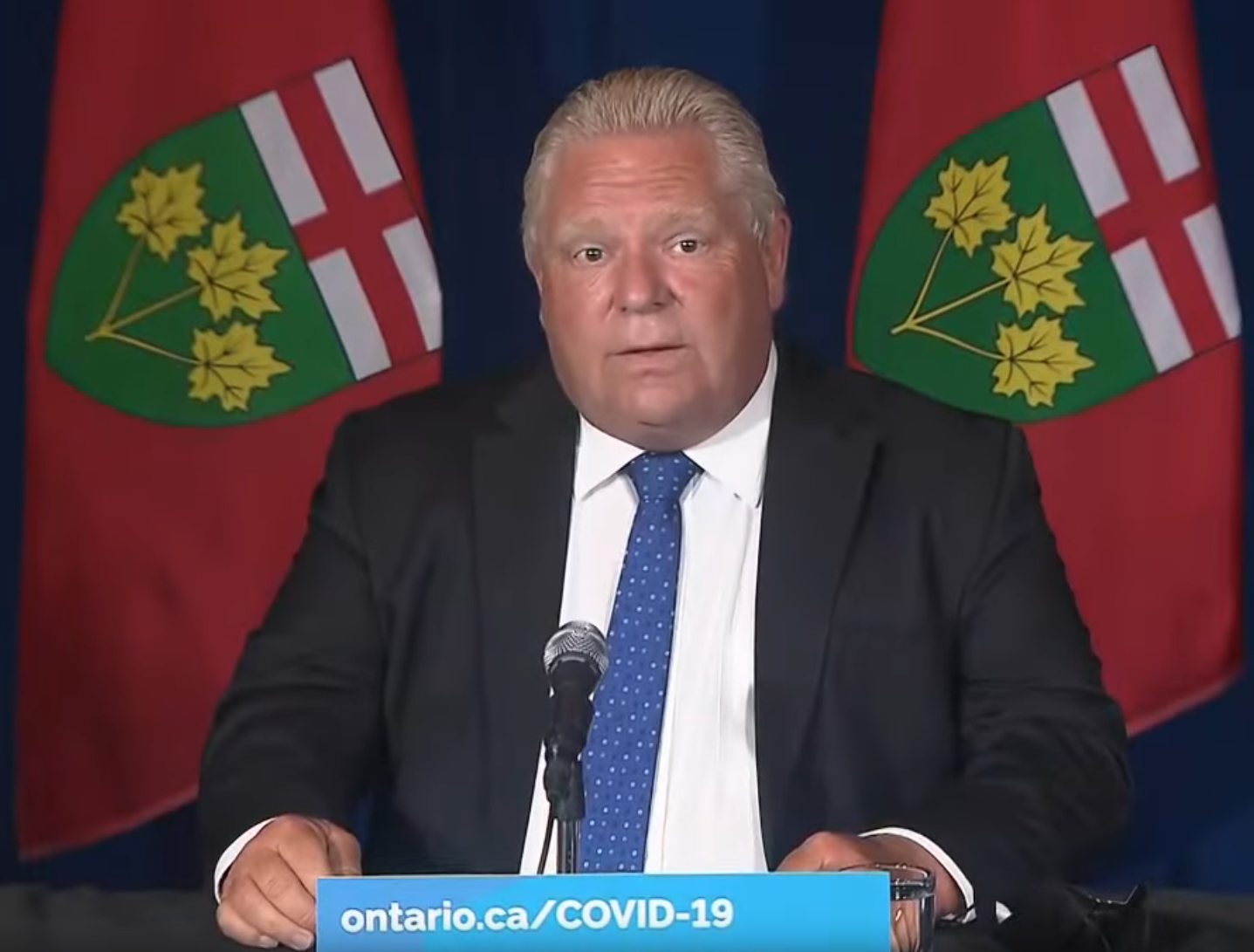TORONTO — Come Monday, capacity limits in gyms, restaurants and recreational facilities will be lifted. By February vaccine requirements will be gone and a month later masks won’t have to be worn indoors.
Those measures are all part of the province’s newly-unveiled plan to “reopen” the province and lift public health and workplace safety measures.
“Thanks to our cautious and careful approach to re-opening, we are now in position to gradually lift all remaining public health measures over the coming months,” Premier Doug Ford stated in an Oct. 22 press release.
“This plan is built for the long term. It will guide us safely through the winter and out of this pandemic, while avoiding lockdowns and ensuring we don’t lose the hard-fought gains we have made.”
Officials say the Plan to Safely Reopen Ontario and Manage COVID-19 for the Long-Term “will be guided by the ongoing assessment of key public health and health care indicators and supported by local or regional tailored responses to COVID-19.”
Items that could derail the plan include possible identification of new COVID-19 variants, increases in hospitalizations and ICU occupancy, and rapid increases in transmission.
“In the absence of concerning trends,” officials say the easing of restrictions will include:
- Oct. 25:
- capacity limits lifted in most settings where proof of vaccination is required, including restaurants, bars, gyms, sports and recreational facilities, gaming establishments and indoor meeting and event spaces;
- limits will also be lifted in certain outdoor settings;
- capacity limits and physical distancing requirements lifted in other settings if they choose to require proof of vaccination, including: personal care services, museums, zoos, fairs and festivals, and more;
- locations hosting weddings, funerals and religious services may also implement proof of vaccination requirements;
- greater capacity at organized public events such as Remembrance Day ceremonies and Santa Claus parades (more details to come);
- Nov. 15: capacity limits lifted in remaining higher-risk settings where proof of vaccination is required, including night clubs, wedding receptions, strip clubs, bathhouses and sex clubs;
- Jan. 17: capacity limits gradually lifted in settings where proof of vaccination is not required; and proof of vaccination requirements gradually lifted at restaurants, bars, sports and recreational facilities, and gaming establishments;
- Feb. 7: proof of vaccination requirements lifted in high-risk settings such as night clubs, strip clubs, bathhouses and sex clubs;
- March 28: remaining public health and workplace safety measures lifted, including face coverings in indoor public settings and proof of vaccination for all remaining settings (recommendations may be released for specific settings, if appropriate).
“Our plan will … take a gradual approach that will protect our health system capacity, prevent widespread closures, keep our schools open and support the province’s economic recovery,” said deputy premier and health minister Christine Elliott.
Dr. Kieran Moore, the province’s Chief Medical Officer of Health, cautioned the plan requires “continued vigilance” by Ontarians in the coming months.
“We must continue to prevent the transmission of COVID-19 in our communities by following the public health measures in place and by vaccinating those who have not yet received their shots,” said Moore.
“Ontario has the infrastructure in place to manage outbreaks, including a high-volume capacity for testing, and people to perform fast and effective case and contact management when needed.”
For more details on the plan visit ontario.ca.




